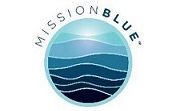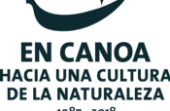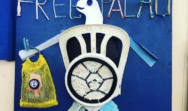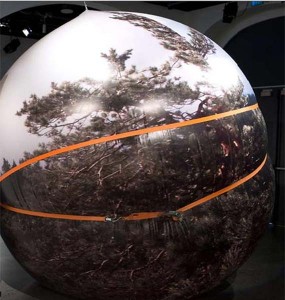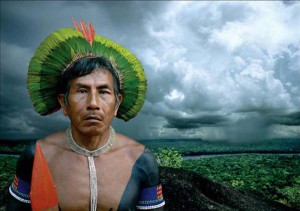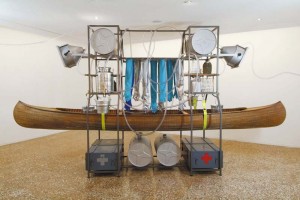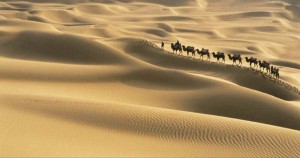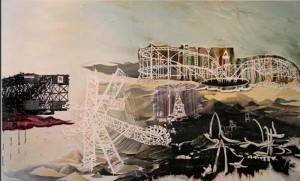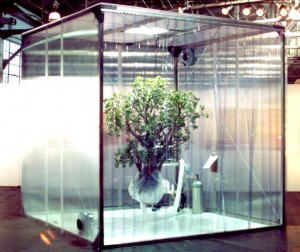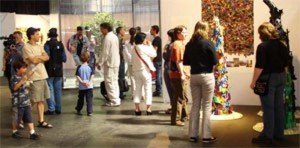Art for the Environment Initiatives
Using Art As A Catalyst for Change
About the Initiatives
2005-2008 Natural World Museum in partnership with the United Nations Environment Program
From 2005-2008, the Art for the Environment initiatives were a collaborative plan between the Natural World Museum and the United Nations environment Program designed to utilize the universal language of art as a catalyst to unite people in action and thought, and to empower individuals, communities and leaders to focus on environmental values across social, economic and political realms. A new exhibit was launched each year on World Environment Day with the intention sharing the innovative creations of diverse artists with hundreds of thousands of people in four international cities each year. The locations changed annually, allowing the Art for the Environment initiative to reach the widest array of communities possible. The intention is that those individuals, from international leaders to grassroots individuals, will be inspired by the art in each locale, act on those feelings, and thus contribute to the betterment of the earth.
THE INITIATIVES
Moving Towards a Balanced Earth: Kick the Carbon Habit
Lowering Carbon Emissions
2008 World Environment Day, New Zealand
The Natural World Museum (NWM) in partnership with the United Nations Environment Programme (UNEP) created a traveling exhibit entitled Moving Towards a Balanced Earth: Kick the Carbon Habit. Debuting at the Te Papa Tongarewa Museum in Wellington to commemorate the celebration of UN World Environment Day, the contemporary art pieces all focused on climate change, with an emphasis on lowering carbon emissions. The thought-provoking exhibit, featuring the work of 27 artists representing 20 countries, included photographs, paintings, sculpture, video, multimedia and conceptual installations. NWM and UNEP used this exhibit to stimulate awareness of the environment and enhance opportunities that lead to action. “Our hope with this exhibit was to contribute to a shift in visitor’s attitudes toward the environment, and in the consumer choices they make, helping to turn the tide of public awareness and promote positive action around climate change” said Mia Hanak, the Founding Executive director of the Natural World Museum.
Envisioning Change: Melting Ice/A Hot Topic
Transforming Climate Change Understanding
2007 World Environment Day, Norway, Monaco, USA
In 2007, the traveling exhibition Melting Ice/A Hot Topic: Envisioning Change opened at the Nobel Peace Center in Oslo, Norway exploring questions such as “What is climate change?” “What are the political implications?” “How does sustainable development create a pathway to peace?” and “Why should we care?” The exhibit was the result of the exploration by 40 artists from 25 countries of the melting of the polar ice caps and permafrost cause by climate change. Focusing on “Change” the exhibit explored physical moments of transformation—of our rapidly melting glaciers from ice to water, Earth’s climate changes and how organisms must adapt to these new conditions—as well as metaphorical changes about our hope to transform society’s mindset to act individually and collectively in a positive way toward a more sustainable future. The exhibit was the official programming for the Tenth Special Session of the UNEP’s Governing Council/Global Ministerial Environment Forum in Monaco and closed at the prestigious Field Museum in Chicago, USA.
Deserts & Desertification – Don’t Desert Drylands
Containing Desertification
2006 World Environment Day, Algeria
Desertification as a global dilemma is no mere concept. It is a reality that is shaping the development of entire continents presently, and if unrealized as a global threat, into the planet’s future as well. Artists participating in the Art for the Environment initiative exhibit Deserts & Desertification represented desert life from Algeria, Ethiopia, Kenya, Namibia, Mali, and the United States. Education and support about this issue, in addition to development and availability of technology for reducing strain on the microclimates are methods that will ultimately lead to a successful future of containing desertification. It was the hope that sharing artists’ deep sense of belonging to our earth, the consciousness of humanity can evolve to a deeper understanding of what it means to be a part of the legacy of our natural world.
Environmental Renaissance Exhibit
Connecting Consumerism to Environmental Stewardship
2006 World Environment Day, San Francisco
How does our use of cell phone in San Francisco contribute to the disappearance of endangered mountain gorilla habitat in Rwanda? Natural World Museum’s exhibit Environmental Renaissance in San Francisco explored how our daily habits contribute to environmental issues and shared how to take personal action in being part of the solution. In this exhibit, art served as the catalyst to stimulate dialogue about topics such as Waste Reduction, Water, Environmental health, transportation, Urban Design, Urban nature, and Energy.
Tree on Life Support
2006 A Permanent Art Installation
Tree On Life-Support, Nairobi, Kenya In March 2006. The Natural World Museum (NWM) and UNEP, with the help of The Baum Foundation and the Meridian Health Foundation, celebrated the launch of the initiative with the opening of the first exhibition at United Nations Headquarters in Nairobi, Kenya. The “Trapped Inside” art was installed as a permanent exhibition at UNEP in Gigiri, Nairobi Kenya on March 31, 2006, and features a living tree on life-support designed by French artist J.C. Didier, a work of art commissioned by NWM and donated to UNEP.
Urban Jungle Environmental Art Expo
Sparking Environmental Conversations
2005 World Environment Day, San Francisco
Natural World Museum (NWM), with the assistance of The Baum Foundation and the Meridian Health Foundation, conceptualized, created, and produced a 25,000 square foot environmental art exposition for the 2005 World Environment Day that opened with a reception at San Francisco’s City Hall, hosted by Daryl Hannah and Julia Butterfly Hill. The exhibition included rare works of art from the private family collections of Ansel Adams and Robert Bateman, and featured 75 emerging artists with the theme of Green Cities. The Exhibition served as important model of conservation, and works of art from internationally renowned artists as well as installations from talented local emerging environmental artists served as a back drop to Al Gore’s San Francisco talk about An Inconvenient Truth.
vvlx,
hentai,
xporn,
xnxx,
sex việt,
Family Practice Doctors Near Me,
Ratify Treaties,
Best Hookup Apps,
Brunch On A Wednesday,
Comfortzone,
Plaza Premium Lounge Orlando Reviews,
Catering 77002,
Cauliflower And Coconut Curry,
Usa Rail Pass,
Active Duty Service Member,
Patch American Flag,
Farfetch Coupon Code,
Connect Google Mini,
Nike Mens High Top,
Bronny James Usc Basketball,
Anal Sex Prep,
Aesports,
Check Balance On Debit Card,
Add People Trustpilot,
Skype Ids,
